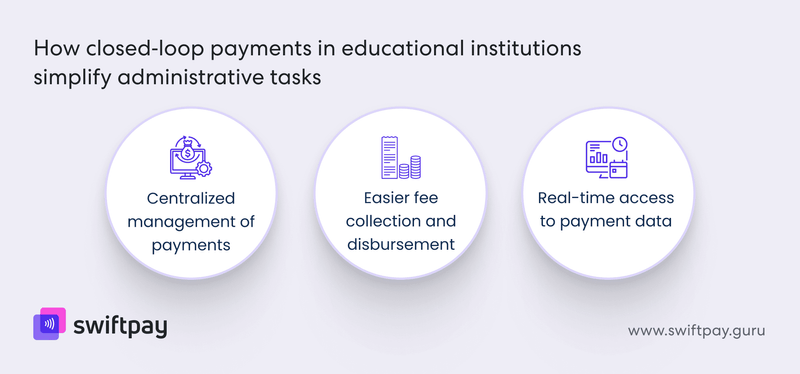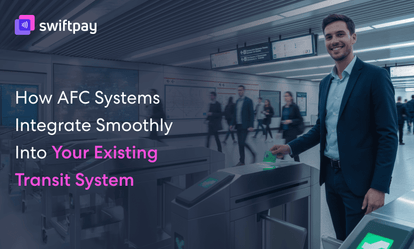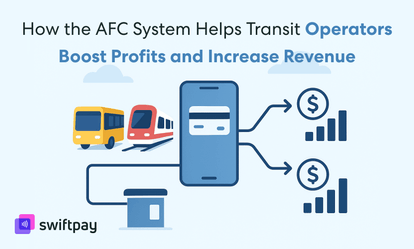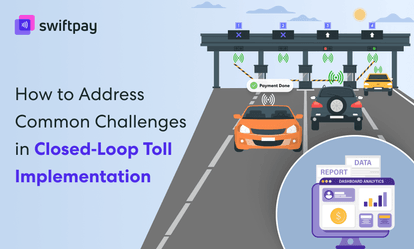Student life is hectic. They have to deal with academic pressure, juggling studies with part-time jobs, and adulting.
When they are on campus, paying for things, managing their finances should be among their least worries. But that usually is not the case. Why?
It’s because many educational institutions still rely on traditional systems for campus transactions. A lot of that involves manual transactions.
That is neither good for your admin department nor for your students. There are more effective and efficient ways to manage and make payments.
This is where closed-loop campus payment solutions offer a smart choice.
It centralizes all transactions under one platform. So, your students, faculty, and staff can make secure and seamless payments using just a single card or app.
The process is quicker, more secure, and far easier to manage. It can bring much-needed efficiency to campus life.
In this blog, you will discover various advantages of closed-loop payments for educational institutions like yours.
Understanding closed-loop payment systems in education
These systems provide a seamless way to manage financial transactions within a controlled ecosystem.
Unlike open-loop systems that interact with external networks, closed-loop payments operate exclusively within a defined environment, like a campus in the case of educational institutions like yours.
Your institution can manage transactions independently and maintain greater control and oversight.
In an educational setting, closed-loop payments are typically linked to student ID cards or mobile apps. This setup enables quick and secure transactions across campus.
Students can use these payment methods for a variety of purposes, like:
- Cafeteria/canteen meals
- Bookstore purchases
- Transportation passes
- Event tickets
Funds are stored and managed within your institution’s own network. That means transactions are faster, more secure, and easier to track.
Key benefits of closed-loop payments for educational institutions
For schools, colleges, and universities, having a closed-loop payment system means more than just streamlined transactions; it’s a pathway to greater security, efficiency, and financial clarity.
Here are several key benefits of closed-loop campus payment solutions:

Enhanced security and reduced fraud risk
One of the standout benefits of closed-loop payments in educational institutions is the better security they provide. How?
Because closed-loop transactions are contained within a private network (your institution).
Hence, exposure to external threats is minimized. Advanced security features like tokenization and encryption are now industry standard. It protects sensitive data and ensures that your students' and faculty members' information remains safe.
Besides, a closed-loop payment system for education allows you to set spending limits and restrict unauthorized purchases.
This helps prevent misuse, and it also reduces the likelihood of fraudulent activities.
Streamlined payment processes and faster transactions
Closed-loop education payment software enables your students and staff to make quick and seamless payments across campus locations and facilities.
Whether it's grabbing lunch at the cafeteria, purchasing stationery at the campus store, or boarding university transportation, they can make payments using a single closed-loop prepaid card or e-wallet.
Apart from that, these systems can also integrate with student ID cards and mobile apps, which can make everything more streamlined.
Users can make payments with a simple tap or scan. This contactless payment method speeds up transactions and reduces the administrative burden of handling physical money. Plus, it’s also more efficient and time-saving.
Better financial oversight and reporting
Educational institutions like yours often struggle with managing multiple revenue streams—cafeterias, bookstores, event tickets, and more.
A closed-loop campus payment system combines these transactions into a single and easily accessible platform.
This means your administrators can easily:
- Monitor spending
- Identify trends
- Adjust budgets more effectively with real-time tracking
Not just that, streamlined reporting reduces errors and simplifies auditing processes.
So, when you have detailed transaction records, you gain clearer insights into financial operations, which paves the way for more strategic decision-making.
Improved student experience and convenience
Paying for stuff within the campus and its facilities should be the last worry for your students.
Students appreciate convenience, and closed-loop payment apps deliver just that. With a single card or closed loop e-wallet app, they can handle all their campus-related purchases. They won’t need any cash or multiple payment methods.
Mobile e-wallet compatibility, in particular, enhances the experience. Students can pay on the go with just their smartphones.
And if your institute issues smart cards, then you also make them compatible with closed-loop systems.
This easy access improves the student experience and enables smooth on-campus spending.
When payments are frictionless, your students are more likely to dine in campus cafeterias, shop at university stores, and attend campus events, which is better for institutional revenue.
Loyalty programs and incentives
Closed-loop campus payment solutions also open the door to loyalty programs and exclusive incentives.
Schools and colleges like yours can reward students for frequent purchases at on-campus facilities by providing discounts or special promotions.
This drives more spending within your institution and campus, and it also creates a stronger sense of community and loyalty among students.
Plus, these incentives help encourage positive spending habits and boost engagement with campus services.
How closed-loop payments simplify administrative tasks
Managing student payments can be a logistical challenge for educational organizations like yours.
Closed-loop payments in education institutions can address this by simplifying administrative tasks. Here’s how:

Centralized management of payments
With a closed-loop payment system in your institute, your administrators can have full control over student payments, refunds, and disbursements through a centralized platform.
This removes the need for paperwork hassle, and it simplifies reconciliation processes.
All financial transactions are logged in real-time, which makes it easier to track and verify payments instantly.
This centralized control reduces administrative workloads. Plus, it also minimizes errors to create a smoother experience for both your staff and students.
Easier fee collection and disbursement
Collecting fees for tuition, library books, and other on-campus services is often a complex task.
Closed-loop education payment software streamlines this process by centralizing fee collection and disbursement.
It allows you to set up automatic payment reminders. Besides, its integration with financial aid disbursements ensures timely payments and reduces missed deadlines.
Educational institutions like yours can also automate processes such as refunding unused meal plan balances or crediting accounts for event cancellations. This simplifies financial management.
Real-time access to payment data
With closed-loop payment software, your administrators gain real-time access to payment data.
They can track spending across various departments with precision. This data is available instantly from the system for monitoring cafeteria purchases, bookstore sales, event ticket transactions, and any other transactions.
This visibility aids in budget planning and helps identify spending patterns, which improves overall financial oversight.
Final thoughts
The benefits of closed-loop campus payment solutions are clear:
- Enhanced security
- Streamlined transactions
- Better financial oversight
- Better student experience
For educational institutions like yours, this means less paperwork, fewer errors, and a clearer picture of campus spending.
For students, it’s all about convenience—one card or app for meals, books, transportation, and more.
With SwiftPay, you can streamline these processes even further.
Our closed-loop payment solution integrates seamlessly with student IDs and mobile apps. It allows instant and secure transactions that align perfectly with current payment behaviours and expectations.
Also, your administrators gain complete oversight, and your students enjoy the simplicity of contactless payments everywhere on campus.
Efficiency and security matter more than ever, no matter what industry.
Choose SwiftPay to modernize your campus payments and provide more convenience to your students and staff.
FAQs
Closed-loop payments are managed within a private and secure network that is managed by your institution itself.
This minimizes exposure to external threats. It also has features like tokenization and encryption to protect sensitive financial information, which reduces the risk of fraud and unauthorized access.
Also, when these systems are integrated with campus ID cards, they can also help prevent unauthorized access to campus and other facilities.
Real-time reporting allows administrators to track transactions instantly, which makes it easier to manage budgets, monitor spending patterns, and identify discrepancies. This transparency simplifies audits and financial planning.
Yes, your institute’s administrators can set spending limits for specific types of transactions, like cafeteria meals or bookstore purchases. This ensures funds are used responsibly and helps prevent overspending.




